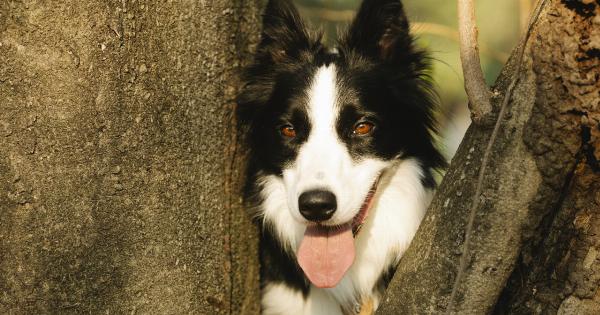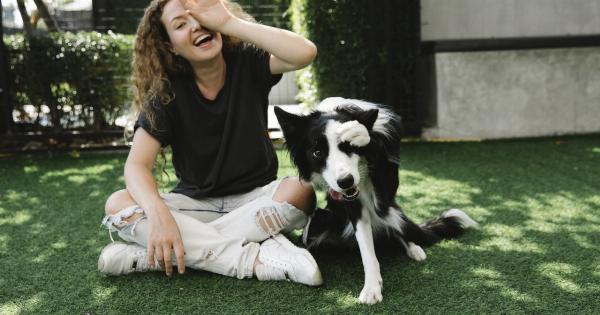As humans, we often rely on verbal communication to convey our thoughts and emotions. However, when it comes to understanding our furry friends, verbal language is not their primary mode of communication.
Dogs primarily rely on body language and other non-verbal cues to express themselves and understand others. One important aspect of canine body language is the use of calm signals.
What are Calm Signals?
Calm signals are the subtle and often subconscious ways in which dogs communicate with each other and with humans. These signals are used to maintain good social relations and avoid conflicts.
By paying attention to these signals and learning to interpret them, we can better understand our canine companions and effectively communicate with them.
The Importance of Calm Signals
Calm signals play a crucial role in maintaining harmony in dog-to-dog interactions and even in human-to-dog interactions. Dogs use these signals to diffuse potentially tense situations, signal submission, establish trust, and avoid confrontations.
They are a way for dogs to say, “I mean no harm” or “I am not a threat.”.
By recognizing and respecting these signals, we can avoid inadvertently causing stress or fear in our dogs, which can lead to behavioral issues.
Understanding calm signals also allows us to better gauge the emotional state of our dogs, helping us provide appropriate support or intervention when needed.
Common Calm Signals
While dogs may exhibit a wide range of signals, here are some of the most common calm signals that you may observe:.
1. Lip Licking
Lip licking or tongue flicking is a common signal dogs use to communicate nervousness, stress, or anxiety. If you notice your dog excessively licking their lips in a non-food-related context, it may indicate that they are feeling uneasy.
2. Yawning
Contrary to what many believe, yawning in dogs is not always an indication of sleepiness. Dogs often yawn as a way to communicate stress or to appease others.
If your dog yawns in situations that do not warrant tiredness, it might be a signal that they are trying to calm themselves or diffuse tension.
3. Turning Away
When dogs turn their heads or bodies away from a person or another dog, it is a clear signal that they are not comfortable or interested in engaging.
This action serves as an avoidance tactic to communicate their need for space or their disinterest in interacting.
4. Play Bow
The play bow is a common signal dogs use to initiate play or indicate that their intentions are friendly. Dogs will lower their front body, keeping their hind end elevated, and may wag their tail.
It’s an invitation to engage in play or social interaction.
5. Slow Blinking
Slow blinking is a calming signal often used by dogs, cats, and even humans to communicate relaxation and non-threatening intentions. When a dog slow blinks, it signifies that they are not a threat and are comfortable in their current environment.
6. Freezing
Freezing refers to a sudden pause in movement, where the dog becomes still and stiff. Dogs may freeze when they feel threatened, uncertain, or uncomfortable.
It’s a signal that something in their environment or interaction is causing them distress or concern.
7. Sniffing the Ground
Sniffing the ground is a common calming signal used by dogs to redirect their attention or indicate that they are not a threat. It is often used during social encounters to show deference and communicate peaceful intentions.
8. Distance-Increasing Signals
Dogs may employ distance-increasing signals to create space between themselves and a perceived threat or source of stress. These signals may include moving away, averting their gaze, or even growling if the situation escalates.
It’s essential to respect these signals and give the dog the space they need.
9. Half-Moon Eye
When a dog’s eyes appear crescent-shaped, showing a significant amount of white in the corners, it is often a sign of stress or unease. This half-moon eye signal indicates that the dog is feeling uncomfortable and may be on guard.
10. Ears Held Back
If a dog’s ears are pinned back against their head, it usually signifies fear, anxiety, or submission. It’s a clear indication that the dog is feeling uncomfortable or threatened and is trying to appease or avoid further conflict.
Understanding and Responding to Calm Signals
Now that we have explored some common calm signals in dogs, the next step is to understand how to respond appropriately to these signals to create a positive and stress-free environment for our furry companions.
1. Respect Boundaries: If your dog displays a calm signal, such as lip licking or turning away, it is essential to respect their boundaries.
Avoid pushing them into situations that make them uncomfortable and give them the space they need.
2. Provide Positive Reinforcement: When your dog exhibits calm behavior, such as sitting or lying down quietly, reinforce this behavior with praise, treats, or affection.
Positive reinforcement helps them associate calmness with rewards, encouraging them to exhibit more calm signals.
3. Learn to Recognize Stress: By familiarizing yourself with the various calm signals dogs use, you can better recognize signs of stress or discomfort in your own dog.
This allows you to intervene early, provide reassurance, or remove them from stressful situations.
4. Consult a Professional: If you are unsure how to read your dog’s calm signals or if you are dealing with behavioral issues, it is beneficial to seek guidance from a professional dog trainer or behaviorist.
They can provide expert advice on interpreting signals and implementing appropriate training techniques.
Conclusion
Decoding calm signals is an essential skill for any dog owner or enthusiast. By understanding and respecting these non-verbal cues, we can foster better communication, stronger bonds, and a more harmonious relationship with our dogs.
Learning to speak dog goes beyond understanding commands; it involves recognizing their subtle language and responding accordingly. So, let’s pay attention to the calm signals and embark on a journey of improved understanding and communication with our four-legged friends.






























